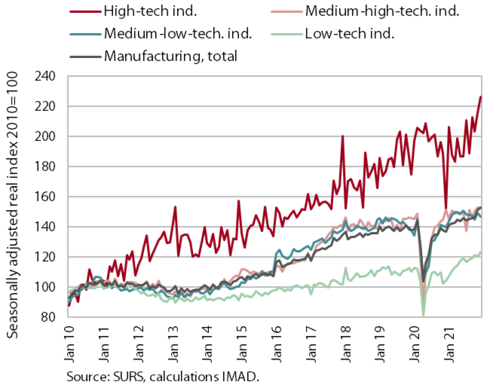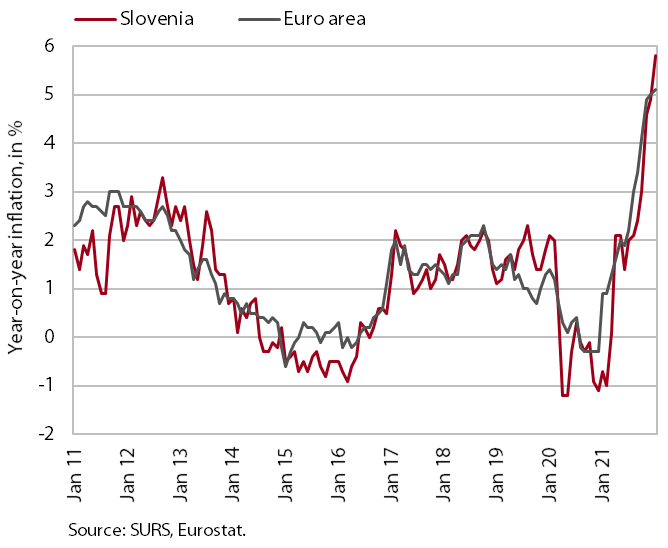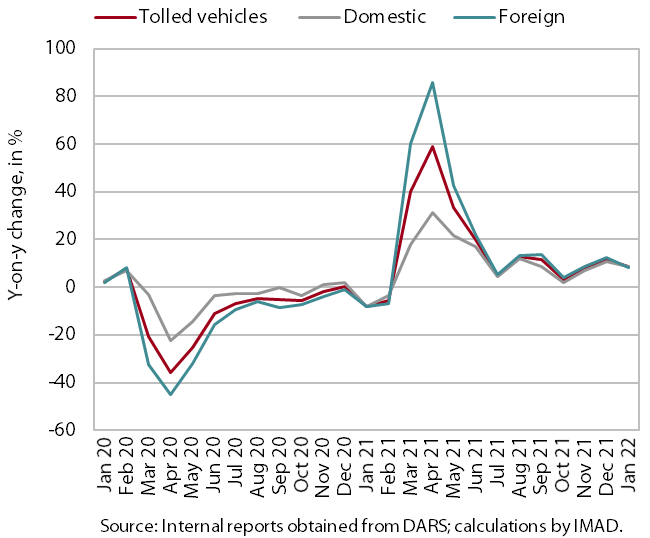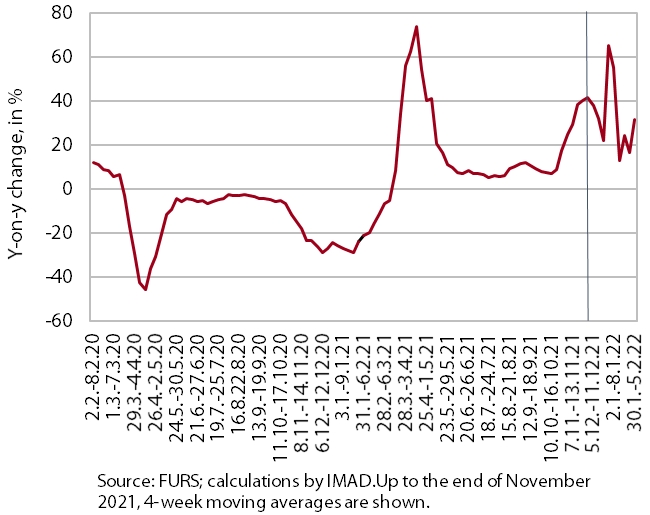Charts of the Week
Current economic trends from 7 to 11 February 2022: manufacturing, inflation, traffic of electronically tolled vehicles and turnover based on fiscal verification of invoices
Following a slowdown in the third quarter of last year, manufacturing production increased significantly, mainly due to strong growth in November. Year-on-year consumer price inflation picked up in January (to 5.8%). Year-on-year inflation continued to be driven mainly by higher energy prices. Stronger growth was also seen in food and services prices. Freight traffic was 9% higher year-on-year in January and turnover based on fiscal verification of invoices was 21% higher at the end of January and beginning of February, partly due to last year's low base.
Manufacturing, December 2021

Following a slowdown in the third quarter, manufacturing production increased significantly again in the last quarter of 2021. The increase was mainly driven by strong growth in November. Compared to the previous quarter, activity in high- and medium-high technology industries increased the most, while growth in medium-low technology industries was slightly negative. The increase in production volume in manufacturing was again quite high in the last quarter of 2021 compared to the same period in 2020. This was mainly due to high year-on-year growth in high- and low-technology industries. Solid year-on-year growth was also observed in medium-high and medium-low technology industries, despite the negative impact of the downturn in the automotive industry, which is still characterised by large-scale semiconductor supply problems.
Inflation, January 2022

Due to higher prices of energy, food and services, consumer prices rose significantly year-on-year in January, reaching 5.8%, the highest level since August 2008. Year-on-year inflation continued to be driven mainly (2.2 p.p.) by higher energy prices. In January, a significant month-on-month increase was observed for gas prices (by more than a quarter), and prices for petroleum products and electricity were also higher. Higher energy and commodity prices, as well as ongoing bottlenecks, are also affecting the rise in non-energy industrial goods prices, especially of non-durable goods, which were already 8.2% higher year-on-year, as prices for vehicles and furniture continued to rise. Prices of semi-durable consumer goods fluctuated significantly year-on-year, reflecting slightly different seasonal developments in the prices of clothing and footwear, which were 2.7% higher in January. Prices in the food and non-alcoholic beverages group continued to rise, increasing by 4.6% year-on-year. Service price growth is also picking up and was above 3% year-on-year in January for the first time since the outbreak of the epidemic. In our view, inflation was mainly driven by services in the culture and recreation and accommodation and food services groups.
Traffic of electronically tolled vehicles on Slovenian motorways, January 2022

In January, freight traffic volumes on Slovenian motorways increased by 9% year-on-year. The year-on-year increase is due to an additional working day, rather than the impact of a lower base due to the second wave of the epidemic last year. Freight traffic volumes increased by 2% compared to January 2019, which had the same number of working days, and were the same as in January 2020 before the epidemic. The share of foreign vehicle traffic was 61% this January, the same level as the same month in the previous three years. January is otherwise one of the three months (along with August and December) with the lowest traffic volumes due to holidays and weather conditions.
Turnover based on fiscal verification of invoices, 23 January–5 February 2022

According to data on fiscal verification of invoices, total turnover between 23 January and 5 February 2022 was 21% higher year-on-year and 6% lower than in the same period of 2020. Year-on-year growth remained similar to the previous two weeks. Turnover in trade, which accounted for 81% of all turnover, was 14% higher. It remained much higher year-on-year in the activities that were still almost completely shut down in this period of 2021 – mainly in tourism-related services. Total turnover was 6% lower than in the same period of 2020, mainly due to lower turnover in the sale of motor vehicles and in tourism-related services.
